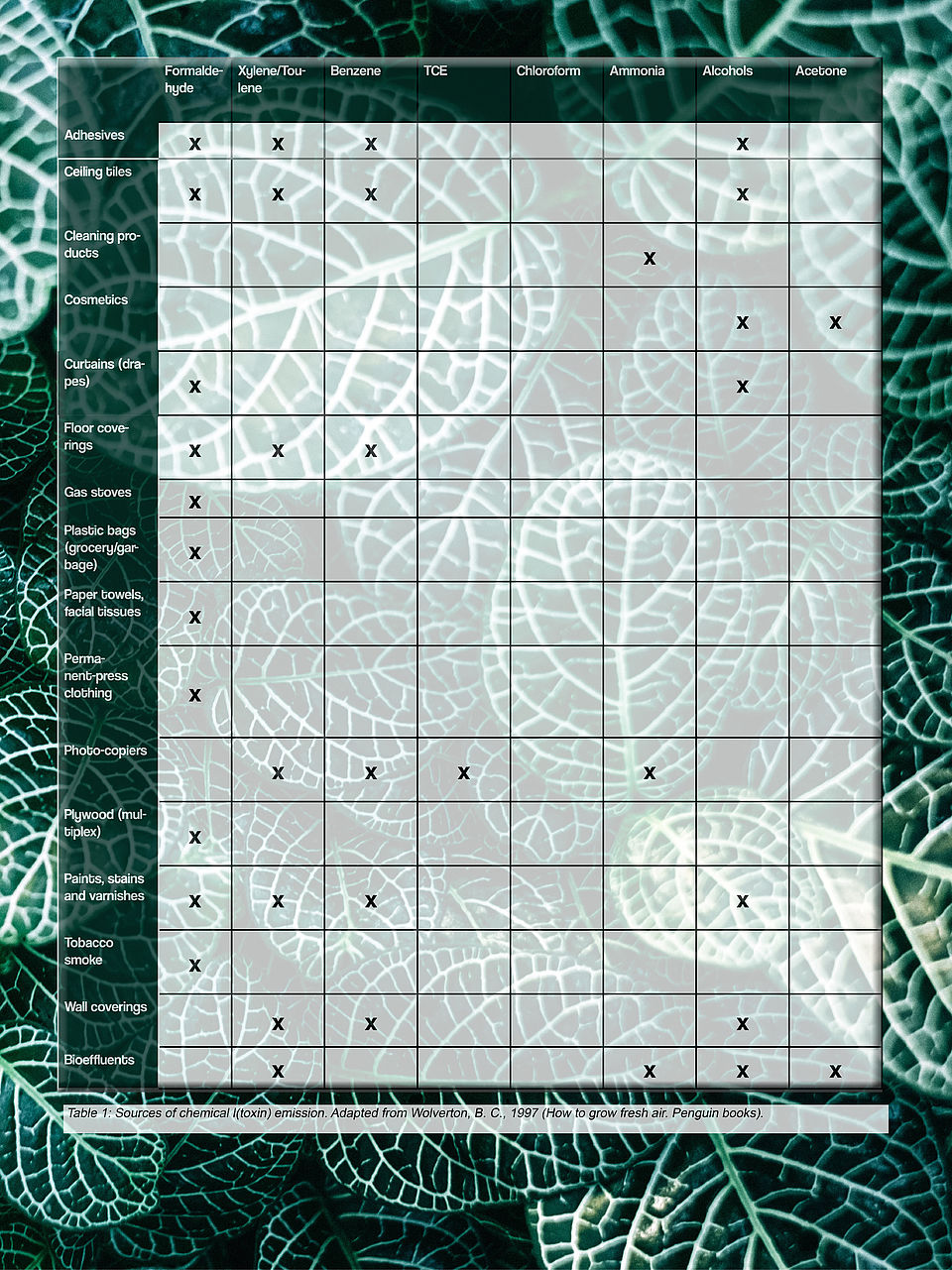
Plants prove to be a valuable asset to any work environment as they have a positive impact on our health. For this reason, we are developing an affordable tool to measure the effect of plants in the interior (office, school, home). The insights delivered by this tool will re-appreciate the value of plants and thereby stimulate their application in interiors, stimulating a healthier environment.
There are already some interior sensors available that monitor CO2 and relative humidity. However, currently there is no solution available that gives a complete overview of the air parameters relevant to our health and influenced by plants.
Leafs, roots (in cooperation with microbes) and soil particles capture air pollutants such as volatile or semi-volatile organic compounds (VOC’s) and particulate matter and take them out of the air. Some of these VOC’s and particulate matter are unhealthy and we therefore call them toxins. Soils particles are capable of adsorbing toxins. Soil bacteria are capable of biodegrading toxins.
Plants capture part of the toxins by the hairs on their surface. While inhaling air for CO2 (processed in photosynthesis), other volatiles also enter the plant. These (toxic) volatiles can be processed by the plant and used as a plant-building block, source of energy or will be excreted via the roots. In the root zone soil bacteria thrive on this.
There is a difference in the amount and ratio of toxins that are taken up different plant species. All plants purify the air. However, some plants take up relatively high levels of certain toxins.
The table below, which is far from complete, gives an idea of the toxins that we are talking about and where they come from.

The air quality in our surroundings is highly important to our health, fitness and wellbeing. The VOC as described above has a negative impact on us. Plants can positively influence the air quality and therefore positively effect ourselves.
Negative effects of VOC’s and particulate matter (Berstein, J.A. et al., 2008): Sick Building Syndrome (SBS): Fatigue, headache, nasal, eye or skin irritation, sore throat, and cough that temporally occur with being in the building and improve away from the building. Irritant effects resulting from mucous membrane irritation Systemic effects such as fatigue and difficulty concentrating Respiratory symptoms Toxic effects such as carcinogenicity.
“In an office of 75m3, it is enough to place three medium-large good air-purifying plants to halve the formaldehyde concentration higher than the legal norm (actual and direct damage and effects on humans) within four hours. Estimates can be made for the number of required plants in a particular space. The more plants the better, the stronger the air purifying qualities of the plant the better. A rule of thumb might be: 350 grams of leaf mass per person of a fair to good air-purifying plants species.” (Duijn, van, B.,2013)
Do you also want to make use of the positive impact of plants and improve the air quality in your building? Are you ready to become an ambassador for the application of more plants interior? We, Blue Engineering together with MKB Limburg and the municipality of Venlo, are preparing to test our tool and collect user-experiences. Interested? Contact us now: e.van.rijsingen@blue-engineering.nl, +3177 3333 690
Bernstein, Jonathan A., et al. "The health effects of nonindustrial indoor air pollution." Journal of Allergy and Clinical Immunology 121.3 (2008): 585-591.
Dr. B.C.Wolverton, "How to Grow Fresh Air", is available in book stores or directly from Penguin books, New York (1-800-526-0275).
Prof. dr. Bert van Duijn, 2013 (Fytagoras, Sylvius Laboratorium) http://www.airsopure.nl/UploadBestanden/5df47668-e2d3-4f6d-8d93-31b76059459a.pdf